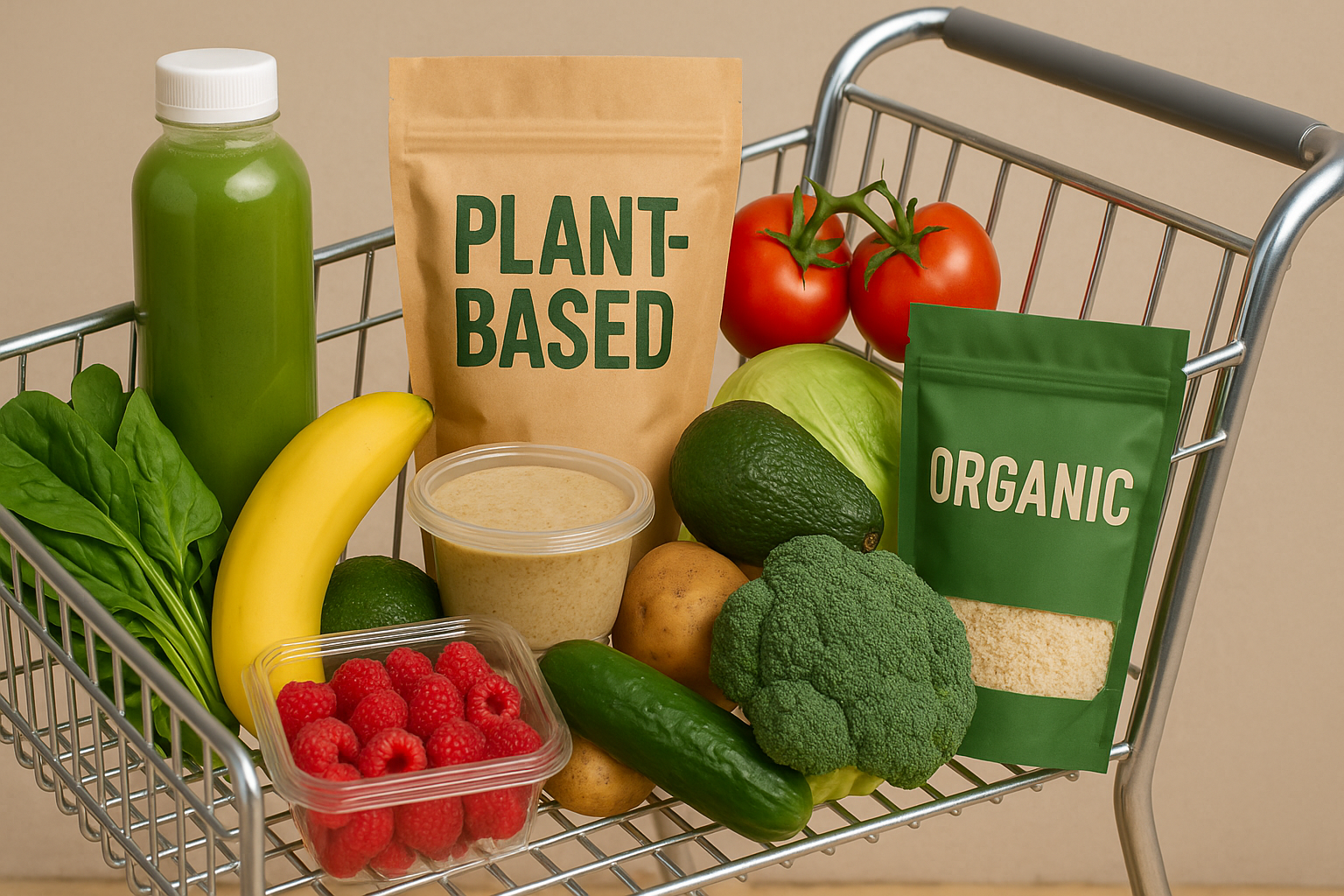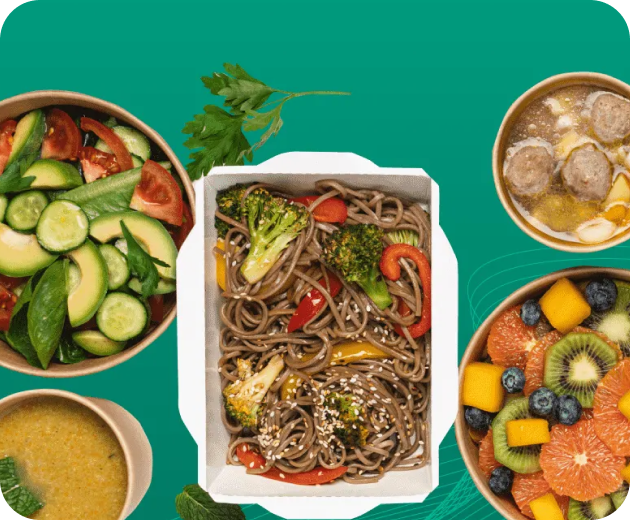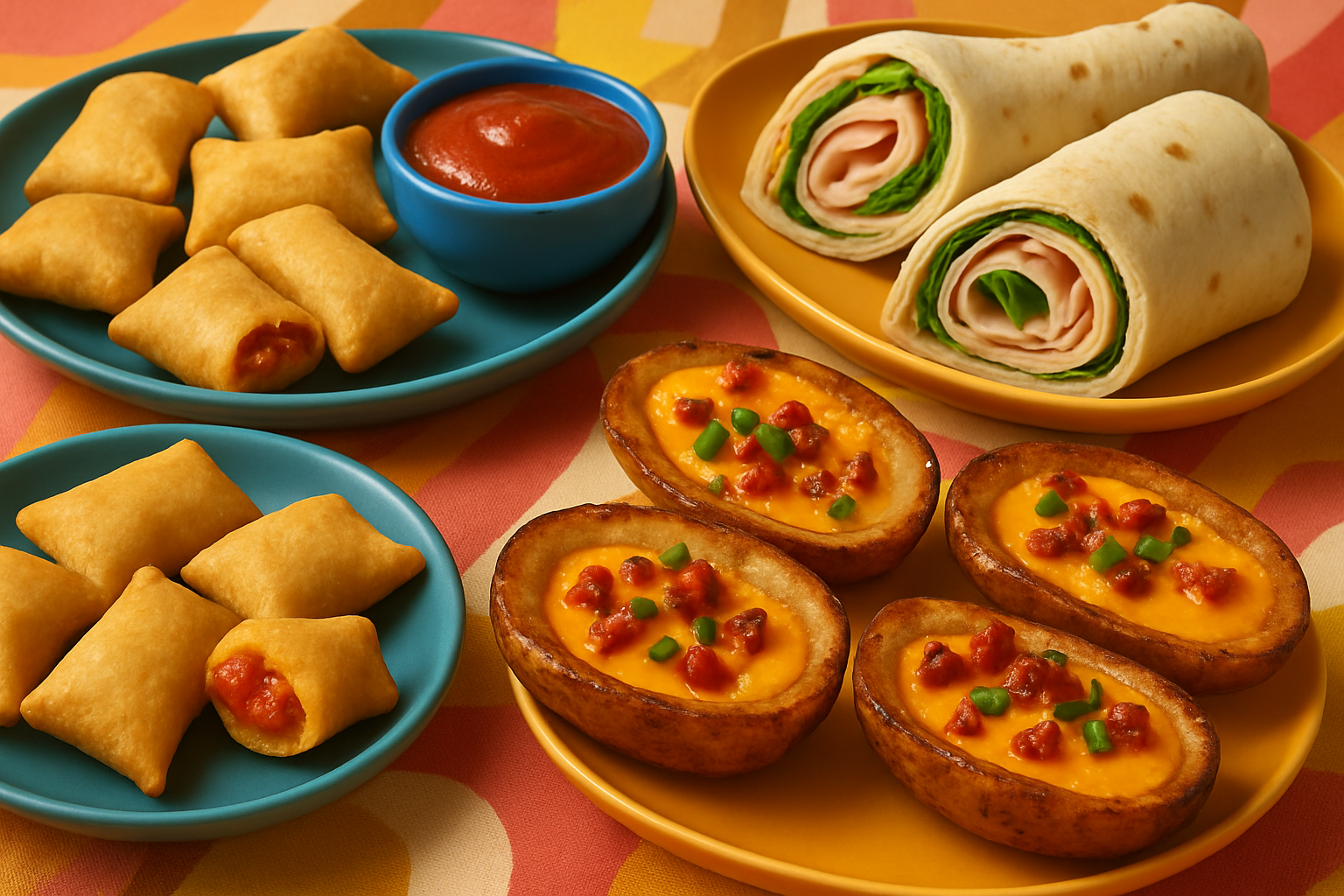Food Shopping Trends: Delivering What Consumers Want AND Need
The food industry isn’t just defined by what people buy, but by how they buy it. Food shopping trends are evolving along with other market-wide shifts and highlighting the role sustainability, technology and convenience play in the modern consumer’s lifestyle.
Want the complete picture of what is coming in 2026? Get the full food trends forecast guide and explore the data, insights, and opportunities driving the industry forward.
What are the latest food shopping trends?

Much has been said about the trends informing WHAT consumers eat, but much less has been said about how exactly they’re getting their needs met. What was once a straightforward process has evolved into a high-tech, convenience-driven experience designed to suit the needs of diverse shoppers.
Here are some of the latest food shopping trends inspired by contemporary consumer behaviors:
- Tech-driven experiences: Today’s shoppers are leveraging the power of technology and employing digital tools for price comparison, virtual staging, order tracking and more.
- Personalized product recommendations: Artificial intelligence tools have hit the scene to help shoppers find products that suit their dietary needs and appeal to their unique flavor preferences.
- Health-informed solutions: Some health and wellness focused brands have begun offering assessment and testing tools to help customers identify the items that would best suit their dietary needs and help them meet their wellness goals.
- Sustainability: Ethical and low-waste production, packaging and shopping protocols are high on young consumers’ priority lists.
- Viral video shopping: Online video platforms like TikTok have recently rolled out their own digital storefronts so consumers can easily purchase the items they see featured in their favorite content.
- Self-checkout: As automation continues to drive the food shopping experience, self-checkout is the perfect balance between do-it-yourself practices and tech-centered innovation.
- Subscription models: Many online retailers have embraced subscription models to make it even easier for consumers to keep their pantries stocked.
- AI assistants: Some digital marketplaces like Amazon allow consumers to place orders verbally using only virtual assistants like Alexa.
All of these shifts have reconfigured how shoppers access their go-to products and have led CPG brands and national retailers to rethink how they meet the evolving needs of their diverse customer bases.
The online and hybrid grocery shopping effect
Hybrid shopping has become the new normal in our post-pandemic world. With so many online retail platforms at their disposal, many brands have empowered consumers to browse products or inspiration online and then purchase their chosen items online or in real life.
Online shopping allows consumers to easily compare prices from multiple retailers from the comfort of their own home and to seamlessly order the things they need. Yes, Amazon has revolutionized product selection and convenience for many online shoppers, but plenty of other brands have found fun and exciting ways to leverage the limitless possibilities of online retail to substitute or enhance their customers’ in-person shopping experiences.
Given that roughly nearly 60% of U.S. shoppers are still ordering their groceries online five years after the coronavirus pandemic caused a spike in digital ordering, it’s crucial that CPG brands, shopper marketing teams and grocery retailers invest in user-friendly, responsive platforms that can incentivize convenience-seekers to utilize their services over their competitors’.
Sustainability and ethical food shopping
Sustainability is a core value and must-have for many contemporary shoppers. Just as shoppers are looking for products that are sustainable in and of themselves, they’re also seeking out brands that prioritize sustainability and ethical practices throughout every stage of production and distribution.
Some popular sustainability and ethics initiatives in the food shopping space include:
- Reusable packaging and return-for-credit systems
- Plant-based packaging
- Upcycled ingredients
- Local ingredient sourcing
- Label transparency
- Sustainability-oriented shopper marketing campaigns
- Give-back initiatives
For brands, sustainability isn’t just a nice-to-have – it’s becoming a non-negotiable. Even in the face of widespread inflation and financial uncertainty, almost 10% of consumers are willing to pay a premium for sustainable products. That means brands have a unique opportunity to meet consumers’ sustainability needs without compromising on their bottom lines.
Inflation, value and the shift to private labels
Economic pressure continues to reshape how consumers determine what is and is not a good value to them. Worldwide, over 30% of shoppers say inflation represents a significant threat to their way of life, and brands who ignore these concerns are missing the moment in big ways.
As the cost of living continues to rise, many retailers have made the shift to private labels to reduce costs and pass on savings to their consumers. Grocery stores, big box retailers and even some more boutique brands have started utilizing private label systems to provide customers with budget-friendly options that will keep them coming back for more.
By cutting out the middle-man, retailers can more reliably meet the needs of their base – even in the face of economic strain. Not only do these initiatives help brands build and retain devoted clientele, they can also send a clear message to customers that their favorite retailers understand their needs and want to support them – even through challenging seasons.
2026 outlook: What’s next for food shopping?
As we move toward 2026, food shopping trends will continue to evolve in order to better reflect growing consumer demand for personalized, streamlined shopping workflows. Given the recent food shopping trends and CPG shopper marketing trends, we can expect to see:
- Smarter automation: Brands will likely build on their existing AI features to provide highly-personalized predictive ordering solutions and intuitive AI-assisted shopping lists to help consumers stay one step ahead of their own purchasing habits.
- Hyper-personal experiences: With so many brands rolling out mobile applications and other digital tools, companies may leverage consumer data to provide shoppers with individualized loyalty perks like interest-aligned coupons and savings opportunities.
- Expanded food-tech: Technology in food production is driving major innovations and may directly influence the availability and pricing of many of the products we purchase on a regular basis.
- Elevated retail design: As consumers continue to embrace premium and luxury food and beverage trends, grocery stores may begin to invest in more upscale marketing materials and offer hybrid store environments that feature chic coffee shops or sections full of locally-sourced, boutique products.
All of these potential enhancements align with the current and future needs of consumers who value experience, affordability and quality. Brands looking to stay one step ahead of these trends should consider investing in an intuitive consumer intelligence platform like Tastewise that can deliver real-time insights into what shoppers are looking for and how they’d prefer to do their weekly shopping.
Final thoughts
While it might be tempting to assume that the future of food shopping is destined to be fully virtual, the latest research suggests that hybrid shopping initiatives may actually be the talk of the town. By combining advanced technology with traditional shopping experiences, customers can maximize value without compromising on quality or convenience.
What first emerged as a pandemic-fueled necessity has turned into a long-term shift in how we shop for, research and access the food items we need. Just as today’s food trends increasingly focus on blending the old with the new, modern food shopping trends deliver all the best parts about visiting your local grocery store while making it easier than ever to prioritize your budget, values and personal preferences.
FAQs about food shopping trends
Want the complete picture of what is coming in 2026? Get the full food trends forecast guide and explore the data, insights, and opportunities driving the industry forward.
Artificial intelligence, automation and consumer intelligence data are powering shopping innovations like digital image searches, app-based shopping, digital wallets and more. Across the board, technological advances are delivering more streamlined, personalized online and hybrid shopping experiences to all.
85% of consumers say they have personally experienced the effects of climate change in their daily lives, which has led many shoppers to prioritize sustainability in their purchasing decisions. Sustainable sourcing, packaging and distribution are subsequently becoming non-negotiables for many eco-conscious consumers.
Online grocery shopping initially surged as a mid-pandemic necessity, but it has retained its momentum in the years since. As demand for digital shopping experiences has continued to increase, so has the need for intuitive, user-friendly online shopping platforms and solutions.
Food shopping trends affect consumer behavior and vice versa. Popular food trends directly influence consumers’ store choices, and popular shopping trends change and expand consumers’ access to various product offerings. Enhanced food shopping options can also help drive customer loyalty and continuously inform company culture.
The future will likely be all about AI-powered shopping. Predictive ordering, visual searches and mobile-app checkout tools will continue to streamline the shopping process for customers across the nation and deliver more optimized, personalized shopping experiences to all.




